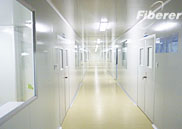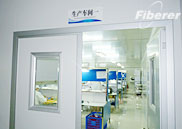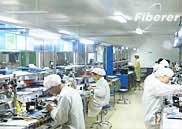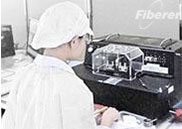The key technology of high power optical isolator
Compared with the lower-power optical isolator which used in common optical fiber communication systems, the design and production of the optical isolator have showed some of the differences in the condition of higher laser power. This is also the main issue need to be addressed during the process of R&D of the high-power devices.
(1) The damage of the optical devices in the higher laser power. This is not only existed in high-power optical isolator, but also existed in the process of R&D of other optical high-power devices. In order to address this issue:
Firstly, we need to keep good environmental cleanliness and select optical devices and optical film with higher damage threshold during production and testing of the product. Absolutely, it is also subject to the cost of the product. If the tiny particles in the air adhere to the optical surfaces, it will greatly reduce the laser damage threshold of these optical surfaces. These tiny particles have a large laser absorption, which will lead to the concentration of energy around the particles and then result in damage of the surface of the optical film or even its surface: there will be pocks and pits on the surface which will result in failure of the device.
Secondly, in general, the optical devicesí» inner damage threshold is much higher than its surface damage threshold, so the laser power density on the device surface will determine the entire deviceí»s ability of resistance to laser damage, especially in the case of the pulse duty. At this time, we can improve the devicesí» damage threshold by expanding the area of the optical by Optical Transform, such as expanding core fiber and beam Lens fiber both had used this principle. In addition, we can decrease the laser power density by laser pulse broadening, which will efficiently improve the devicesí» laser damage resistance by avoiding the concentration of the laser power on both space and time.
(2) The thermal impact and thermal design of the high-power devices. Because high-power devices are working in high power, compared with the low-power devices, it will be easier to be heated and inevitably influenced by the increased temperature. Therefore, the performance of the device has greatly subject to the thermal properties of materials and thermal design. In general, optically characteristics of optically crystal is easily influenced by the temperature, if the device absorbs a lot of laser energy and results in a big rise of its inner temperature, it will make the light polarization planeí»s rotation angle of the optically crystals deviated to the common value, which will result in a dramatic decline of its properties or even the device will be damaged in a serious condition.
In addition, HTS-PM is easier to occur weakening of magnetic field or demagnetization phenomenon at high temperature, or even occur the irreversible loss of magnetic field, so high temperature is harmful to the stable work of HTS-PM. Moreover, in the case of special high optical power, the temperature of optical device will have a big rise. As for the thermal is delivered from inner to surface, the deviceí»s inner temperature is sure to be higher than its surface temperature, so the inner of the optical device will occur temperature gradients and thermal stress, which result in the different variation of the refractive index of the internal center and the edge of the light beamí»s cross-sectional. Then it will appear refractive index difference, that is, the lens-like effect. This will change the propagation characteristics of the light beam and result in serious decline in its quality, seriously affect the normal working of the device or even cause damage.
Fiberer.com High power isolator type as follow:
High Power Isolator 980nm
High Power Isolator 1064nm 500mW
High Power Isolator 1030nm 1064nm 1 ~ 20W
High Power Isolator 1310nm ~ 1550nm 1W ~ 10W
High Power Isolator Core 1310nm 1550nm 1W ~ 10W
Free Space Isolator 1310nm 1480nm 1550nm 1W
High Power Free Space Isolator 1064nm
In-Line Polarizer 1064nm 1310nm 1550nm 3W
Fiber Collimator 1030nm 1060nm ~ 1550nm 3W to 20W
Collimated Beam Output Isolator 1064nm 5W ~ 20W
PM High Power Isolator 850nm
PM High Power Isolator 980nm
PM Isolator 1064nm 500mW
PM High Power Isolator 1064nm 1W ~ 20W
PM High Power Isolator 1310nm ~ 1550nm 1W ~ 20W
PM Fiber Collimator 1060nm ~ 1550nm 3W to 20W
PM Collimated Beam Output Isolator 1064nm 5W ~ 20W
